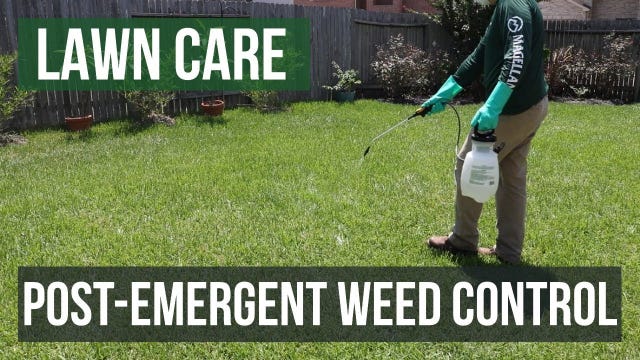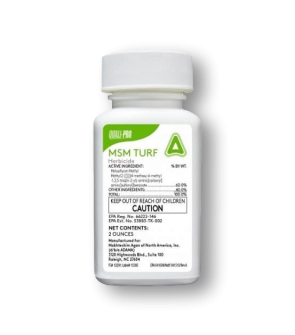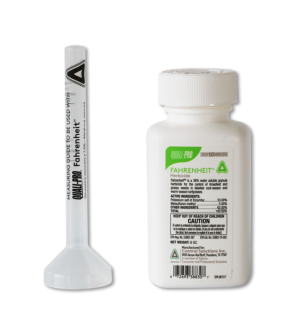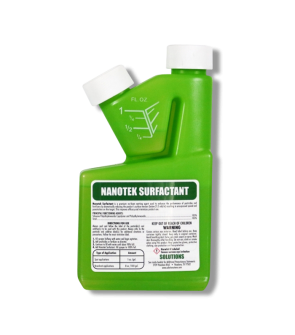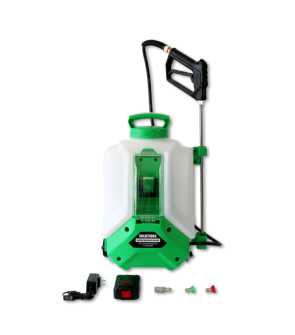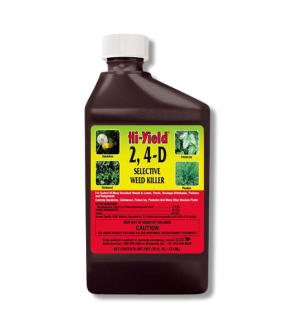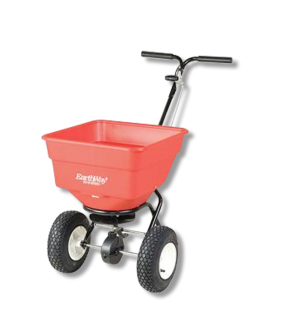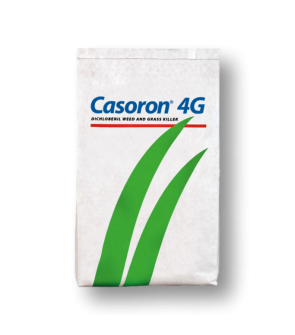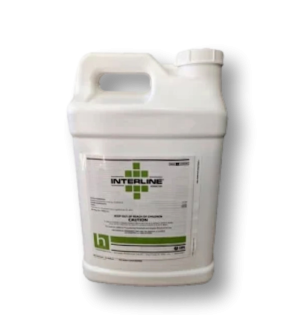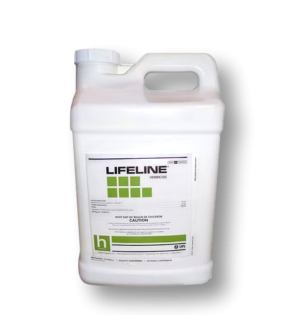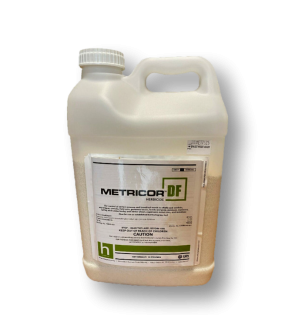Gain access to personalized product screening, the best pricing, rewards, and more!
Most Effective Products
Post-Emergent Herbicides Buyer's Guide
This page is a general buyer's guide for post-emergent herbicides. Using the methods or products suggested, you can better understand and control weeds with post-emergent herbicides. Follow this guide and use the recommended methods or products, and we guarantee 100% improvement of weeds within your turf and a better knowledge of which post-emergent herbicides to buy.
If there is one thing no one wants to see in a garden, it is weeds. Weeds are the most persistent pests for even the most professional landscapers. You can try to hand pull these weeds, but this can take hours. For faster results and less manual labor, we recommend a post-emergent herbicide. Post-emergent herbicides attack weeds that are already present in your yard.
What are Post-Emergent Herbicides?

Post-emergent herbicides are chemical products that target broadleaf weeds and some species of grassy weeds emerging from your turf. Pre-emergent herbicides are used to work on weeds that are still germinating underneath the turf and have not appeared.
Post-emergent herbicides are a common product for homeowners to use because pre-emergent herbicides are not applied at the correct time of year, resulting in weeds germinating in your yard. Post-emergent herbicide products contain a mixture of active ingredients that will terminate the selected weed and ensure that it does not grow back for several days (depending on the label).
Types of Post-Emergent Treatments
Just as there are several species of broadleaf and grassy weeds worldwide, there are several types of post-emergent herbicides. Understanding the kind of weeds you are trying to eliminate is crucial in choosing a post-emergent herbicide. Each herbicide product aims to kill a select or wide variety of weeds within your yard, so understanding the type of weed present in your turf is essential. Another result of choosing the wrong type of post-emergent herbicide is unintentional damage to your grass. Choose the best post-emergent herbicide product that suits your lawn and weed needs.
Systemic VS. Contact Post-Emergent Herbicides
The main difference between systemic and contact post-emergent herbicides is how they destroy weeds. Systemic herbicides need time to be absorbed into the plant for maximum control, killing the weed and its roots. Systemic post-emergent herbicides work best to prevent the return of broadleaf and grassy weeds. Contact post-emergent herbicides kill weeds on contact once they touch the exposed part of the plant. These types of herbicides are used on annual and smaller weeds.
Selective VS. Non-Selective Post-Emergent Herbicides
Selective herbicides are designed to kill or control certain weeds in areas without destroying any surrounding grass. Non-selective herbicides are more powerful and are used for broad control of weeds, but they usually kill any plants, ornamental plants, flowers, and grass they come into contact with. Non-selective herbicides are best for large-scale applications, whereas selective herbicides are ideal for small-spot applications to avoid damaging unnecessary plants.
Liquid VS. Granular Post-Emergent Herbicides
The difference between liquid and granular post-emergent herbicides is the method of mixing. As the name suggests, liquid post-emergent herbicides need to be mixed with water, whereas granular post-emergent herbicides need to be placed in a spreader to be used. Plants treated with liquid herbicides must be adequately coated until the point of runoff to ensure effective control over the weed.
For best results, granular herbicides must be applied when the surface of weed leaves is wet to ensure the product does not fall off. Application with granular herbicides is best done in the early morning when foliage is still moist from morning dew. Liquid herbicides can be distributed when the weed's leaves are wet or dry, which makes them a more straightforward application. While there are liquid herbicides to be used, we find that granular herbicides are more economical and powerful in controlling weeds.
When to Apply Post-Emergent Herbicides
As with any lawn care program, the application of post-emergent herbicides depends on the time of year and location. Post-emergent herbicides work well when applied prior or the early half of spring.
The smaller the weed, the faster and easier it is to control it. Do not be dismayed if you still see these pesky weeds in your turf; several applications may be necessary to kill them. At any point in the season, it is recommended to check the weather forecast for rainfall.
Allow for at least 48 hours without rain before applying a post-emergent herbicide, as some products cannot withstand rain or can be washed off the treated area.
Early Spring - Insect your lawn for winter debris and any visible signs of weeds such as discoloration, brown patches, or plants growing in an undesirable location. During this period, tiny sprouts of weeds are beginning to emerge in your turf. One application in the early spring months is necessary to control the number of weeds emerging over the next several months. Look at our weed control articles if you need help identifying the weed in your yard, or contact a trained Solutions Professional if you are not sure it is a weed.
Late Spring —In the middle of late spring to summer, reapplication of a post-emergent herbicide is necessary. Before application, do not mow your yard for three days, as some post-emergent herbicides recommend. The night prior to application, water your treatment area to ensure the post-emergent herbicide sticks to the weeds' leaves. You can apply it early in the morning when foliage is still covered in dew.
Fall—One last application may be made before the ground freezes. After you have mowed for the last time in the fall season, apply your post-emergent herbicide. Applying in the fall is crucial, as this will help prevent annual weeds from germinating in the following spring.
How to Apply Post-Emergent Herbicides

Post-emergent herbicides are typically applied in a sprayer, hand pump, or spreader. Depending on the size of the treatment area and its location will determine the method to use for post-emergent herbicide application.
For large-scale areas, we recommend using a broadcast treatment and a spot treatment to control specific or small areas in your yard. Some liquid post-emergent herbicides may be mixed with a surfactant.
A surfactant (also known as a wetting agent or spreader/sticker) is a type of chemical additive that acts as a buffer, breaking up the surface tension of a liquid. In weed control products, surfactants are added to the solution to help the product stick to the sprayer surface better and to help break down the plant's resistance to absorbing the chemical being applied to it.
Our go-to post-emergent herbicide is MSM Turf Herbicide, which covers up to 43,560 sq. ft. of area (1 acre). This herbicide may be mixed with a surfactant like Nanotek Surfactant.
Calculate the square footage of your yard (measure and multiply length x width) and then input the appropriate amount of MSM Turf Herbicide in a pump sprayer or hose-end sprayer mixed with water.
Add surfactant to the MSM Turf Herbicide mixture at a rate of 1 fl. oz. per gallon of the solution and agitate until well combined.
Apply the MSM Turf Herbicide solution to the targeted weed using a fan-tip nozzle spray setting to spray a fine mist that will evenly coat the weed. Noticeable results occur in 1 to 3 weeks.
Depending on the mix rates for your selected post-emergent herbicide, you will typically take half the amount of measured water and add it to your sprayer of choice, add the appropriate amount of post-emergent herbicide, and fill the rest of the way in the sprayer with water. Agitate well until the spray mixture is even, then apply it to the weed.






